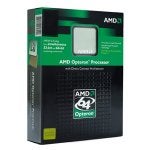Here's a wild idea I'm working on. Perhaps I can pitch it to someone.
It's a global design for a self learning EFI. The system would incorporate a Wide Band O2 sensor with an RPM meter and computer software, combined with an accelerometer such as the G-Tech, a programmable ECU and some statistics software.
I don't believe this is as far fetched as one might think. The hardware exists. The real hurdle is getting through the proprietary software from each manufacturer.
I'm looking as some graphs by Motec, Logitech, and Statistica. The Logitech software can plot real-time A/F against RPM. The G-tech can plot acceleration against RPM. Using this as a common denominator, the statistics package could be set up to compare various runs with alterations in injector timing and A/F changes.
The system would require "learning" runs on the same road. After a large enough sample of runs, the software could make reccomendations for changes in the injector timing. The changes could be instituted in small increments and the computer could then compare the gains/losses against the previous curves.
Statistica is very good at making predictions. A second "testing" phase could then occur as the reccommended changes are made to the ECU map. There may be many occasions where the changes were detrimental to efficency, but after a while the software could bracket-in the best solutions. This is very similar to how a Tank calculates a firing solution.
The best advantage of this system is that it could tailor itself to individual driving habits.
As the accelerometers get more advanced, G forces for inclines and curves could be taken into account, and the software could remap the ECU on-the-fly in situations were richer mixtures were needed for more power up hills and around curves, and then at other times, lean the mixture for high speed straight driving.
What do you think?
It's a global design for a self learning EFI. The system would incorporate a Wide Band O2 sensor with an RPM meter and computer software, combined with an accelerometer such as the G-Tech, a programmable ECU and some statistics software.
I don't believe this is as far fetched as one might think. The hardware exists. The real hurdle is getting through the proprietary software from each manufacturer.
I'm looking as some graphs by Motec, Logitech, and Statistica. The Logitech software can plot real-time A/F against RPM. The G-tech can plot acceleration against RPM. Using this as a common denominator, the statistics package could be set up to compare various runs with alterations in injector timing and A/F changes.
The system would require "learning" runs on the same road. After a large enough sample of runs, the software could make reccomendations for changes in the injector timing. The changes could be instituted in small increments and the computer could then compare the gains/losses against the previous curves.
Statistica is very good at making predictions. A second "testing" phase could then occur as the reccommended changes are made to the ECU map. There may be many occasions where the changes were detrimental to efficency, but after a while the software could bracket-in the best solutions. This is very similar to how a Tank calculates a firing solution.
The best advantage of this system is that it could tailor itself to individual driving habits.
As the accelerometers get more advanced, G forces for inclines and curves could be taken into account, and the software could remap the ECU on-the-fly in situations were richer mixtures were needed for more power up hills and around curves, and then at other times, lean the mixture for high speed straight driving.
What do you think?







